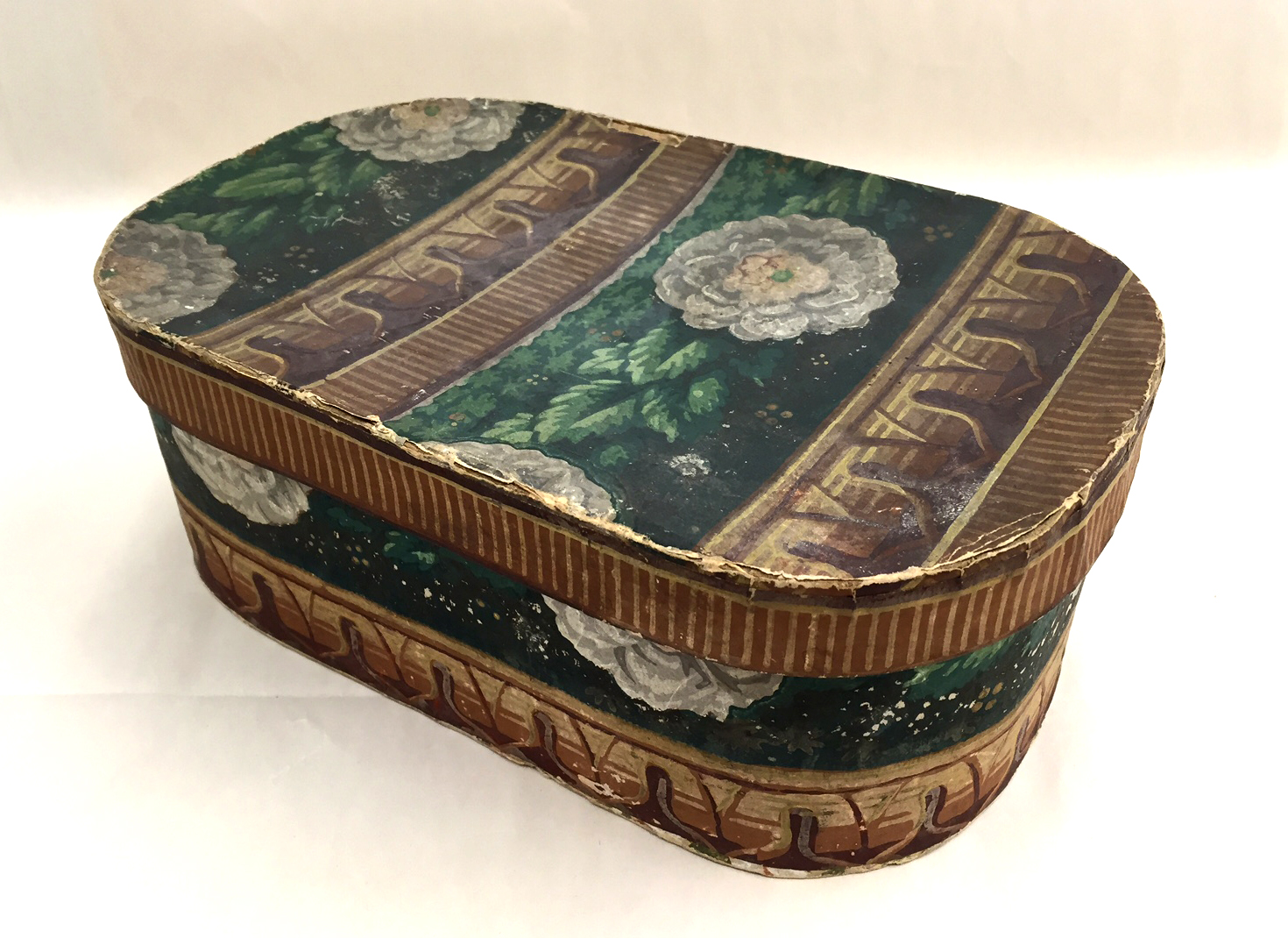Bandboxes, a decorative yet practical item of an earlier time, were originally used as receptacles for holding men’s neckbands in the early 17th century. Although they continued to hold that purpose heading into the 19th century, women would soon adapt them to carry their personal items and accessories. Between the years 1820 and 1845, the bandbox was at its peak popularity. This floral bandbox came to be in the Cooper Hewitt collection in 1968. It is from around 1835, but we don’t know for certain its original purpose. One box from 1834 with a similar shape was used for gloves, therefore we might assume that this box was as well.
The label underneath the lid tells us that the retailer was Joseph Freeman, and the paper manufacturer was John Perkins. Freeman died in 1841, but John Perkins made wallpaper in New Bedford from 1809-1859. In a partnership with a man named Mr. Smith, Perkins went on to exhibit at New York’s Crystal Palace Exhibition. In 1853 he received an honorable mention. The box’s wallpaper exemplifies the block printing process that is still being done by craftsmen at this time. The floral and leaf design is a good example of the wallpaper trends between 1816 and 1830. The overlapping green varnish leaves with flowers dispersed throughout, echo the floral patterns popular in the early 19th century. These designs represented a nostalgia for nature. This longing for nature was a response to overcrowding in growing cities, as well as the increase in factories and machinery. The border pattern imitates crown molding, another trend of the period. Borders would often imitate stucco, wood, and sculpture, based on classical and architectural designs.
Hannah Winiker is currently a first year student in the History of Decorative Arts & Design Cooper Hewitt, Smithsonian Design Museum/Parsons New School for Design. She will specialize in 19th century American and European decorative arts.
